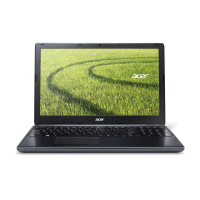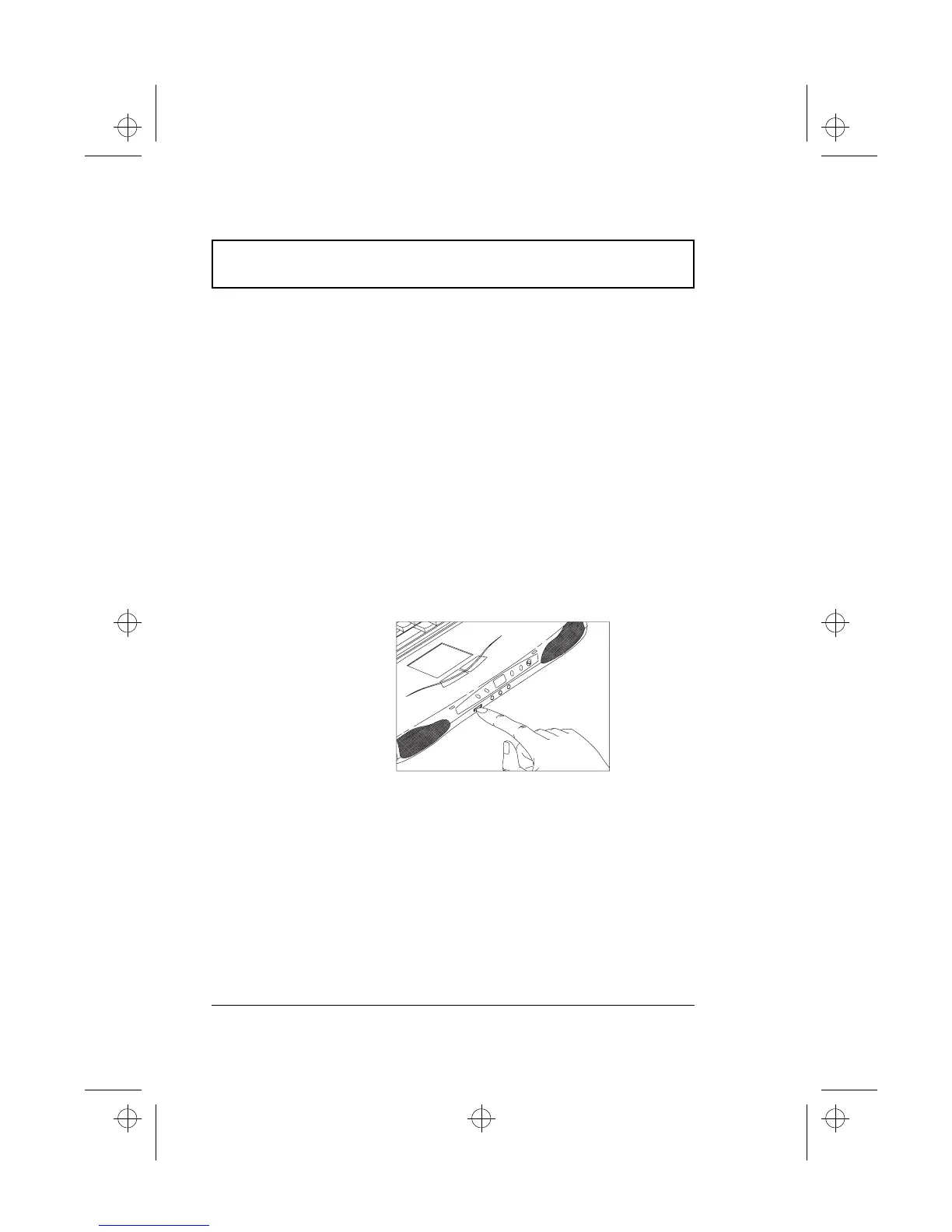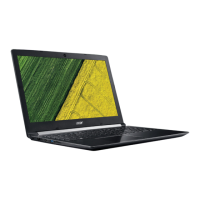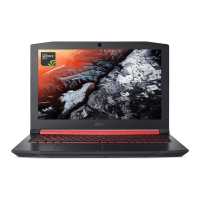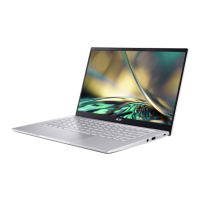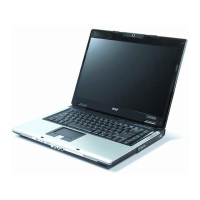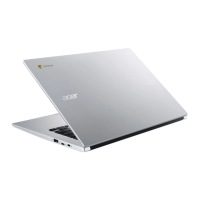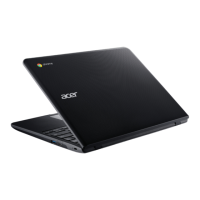Audio
30 User’s Guide
Play-now Audio
To play audio CDs without turning on the computer, follow
these steps:
1. Slide the power switch and release it to turn on the
audio CD player. The status LCD turns on.
2. Press the CD eject button to eject the CD-ROM drive
tray.
3. Firmly place an audio compact disc on the CD-ROM
drive tray spindle until you hear it click in place.
4. Close the CD-ROM drive tray.
5. Use the front panel buttons to play the CD.
6. Use the volume control knob to adjust the volume level.
Turn the knob to the right to increase the volume; turn
it to the left to decrease the volume.
510.book : 510-1.fm Page 30 Thursday, March 4, 1999 1:03 PM
